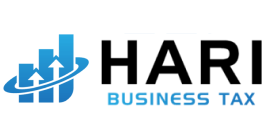Tips for Filing Corporate Taxes as a Self-Employed Business Owner
Tips for filing corporate taxes as a self-employed business owner in Canada include keeping organized records and separating personal and business finances to simplify your small business tax return. Canadian small business tax filing also involves understanding deductible expenses and managing quarterly tax installments to stay compliant.
Request a Free Consultation
Self-Employed Individuals vs. Incorporated Business Owners: Tax Filing Differences in Canada
When you run a business in Canada, tax filing looks different depending on whether you’re self-employed or incorporated. Knowing these differences helps you handle money better.

Key Differences Between T1 and T2 Returns
- Self-employed people file a T1 personal tax return.
- Incorporated businesses file a T2 corporate tax return.
- The T1 form covers all your income—job earnings and business profits from sole proprietorships.
- The T2 form reports only what the corporation makes, separate from your personal income.
- T2 returns usually need more detailed info because of the corporate rules.
Tax Implications of Choosing Sole Proprietorship vs. Incorporation
- You’ll pay taxes differently based on your business type:
- If you go with a sole proprietorship, you report income on your T1 return. You and your business are the same legally, so you face unlimited liability.
- If you incorporate, you get limited liability protection. That means less personal risk. Plus, corporations may pay lower taxes on money kept in the company compared to higher personal tax rates.
- Choosing right depends on how much risk you can handle and what kind of taxes make sense for your business.
Filing Taxes Self-Employed: T1 vs. T2 Tax Filing for Self-Employed Individuals and New Corporation Owners in Canada
Filing taxes can feel tricky but staying organized helps. Both self-employed folks and new corporations have to follow CRA rules closely.
Detailed Explanation of T1 and T2 Forms
- Here’s what each form asks for:
- For Self-Employed (T1):
- Report all income including self-employment money.
- Claim expenses related to your business work.
- For Incorporated Businesses (T2):
- Report company revenue separately from personal cash.
- Fill out extra forms about things like capital gains or losses.
- For Self-Employed (T1):
- Make sure to send these forms by their deadlines or CRA might fine you.
Step-by-Step Guide to Completing Relevant Tax Forms
- Collect all paperwork—receipts, invoices, bank info.
- Use CRA’s site called My Business Account for help with filing.
- Fill out the forms carefully. If unsure, ask an expert.
- Being neat with records makes filing faster and easier later on.
Deductible Expenses for the Self-Employed: Maximizing Your Tax Return
Claiming the right expenses saves you money when paying taxes as self-employed.
Comprehensive List of Deductible Business Expenses
- Home Office Deduction: Part of your home costs if used just for work.
- Vehicle Expense Claim: Costs for using your car in your business.
- Contract Labor: Money paid to freelancers or helpers.
- These lower your taxable income when listed correctly.
Strategies for Maximizing Deductions and Minimizing Tax Liability
- Track expenses well during the year; digital record keeping helps a lot.
- Keep your personal bank stuff separate from business accounts.
- This keeps things clear if CRA ever checks up on you.
Organized Record Keeping for Self-Employed Businesses in Canada
Keeping your records organized matters a lot when you run a business on your own. It helps you meet tax filing deadlines Canada sets, so you don’t miss anything. Managing your financial records well means you can track your income, expenses, and deductions without much hassle. This also cuts down on mistakes during tax season.
These days, digital record keeping is the way to go. Many small businesses use digital bookkeeping apps to store receipts, invoices, and bank statements safely. These apps help sort out your tax records by grouping similar transactions. That makes it easier when you prepare your T1 return.
To keep accurate records:
- Save all receipts and invoices for your business.
- Update your books often—weekly or monthly works best.
- Back up files on a secure cloud storage.
- Match bank statements with your bookkeeping software every month.
- If you stay organized all year, you’ll avoid last-minute panic. Plus, you’ll meet CRA rules easily when filing as self employed.
Separating Personal and Business Finances: Best Practices for Canadian Small Business Tax Filing
Mixing personal money with business cash causes confusion. It also risks errors during tax filing and may raise audit flags. That’s why separating personal and business finances is important for self employed taxes Canada.
Open a bank account just for your business money. Use it only for income deposits and paying business expenses. This way, it’s easier to spot deductible costs like office supplies or travel.
Here are some tips:
- Use different credit cards for business spending.
- Don’t take cash from the business account for personal use.
- Keep clear notes about any money you move between accounts or owner’s draws.
- Clear separation makes bookkeeping simpler and helps claim only real business expenses on your T1 return.
Quarterly Tax Installments: Planning and Managing Your Payments
If you owe more than $3,000 in taxes each year as a self-employed person in Canada, paying quarterly tax installments is usually required. Planning these payments prevents interest charges or fines from CRA.
Quarterly installments mean breaking your estimated yearly taxes into four parts. You pay these on March 15th, June 15th, September 15th, and December 15th.
To plan better:
- Look at past tax returns to guess how much you’ll owe.
- Put money aside regularly in a separate savings account just for taxes.
- Use CRA’s online tools or reliable accounting software to calculate payments.
- Paying on time keeps your cash flow steady. It also helps avoid surprises when filing corporate taxes as a self-employed business owner in Canada.
Gondaliya CPA works with both self-employed folks and incorporated owners. They focus on simple record keeping, managing finances right, and filing taxes on time under Canadian rules while helping clients get the deductions they qualify for.
Important Tax-Related Dates and Deadlines for Self-Employed Individuals and Incorporated Businesses in Canada
Paying attention to tax filing deadlines in Canada really matters. If you’re self-employed, you can file your tax return by June 15 of the next year. But here’s the catch: you have to pay any taxes you owe by April 30, or you’ll start getting charged interest. So, filing late is okay, but paying late is not.
Incorporated businesses work a bit differently. Their corporate tax payment deadlines depend on when their fiscal year ends. Usually, corporations have six months after their fiscal year-end to file the T2 return. But paying the taxes depends on whether they are a small CCPC or not; payments are due two or three months after the fiscal year ends. Miss these dates, and penalties start piling up.
Here’s a quick list of important tax-related dates:
- April 30: Pay your personal income taxes if you’re self-employed.
- June 15: File your T1 return if you’re self-employed.
- Fiscal Year-End + 6 Months: Deadline to file corporate tax returns (T2).
- Fiscal Year-End + 2–3 Months: When corporate taxes must be paid.
- You should plan quarterly payments during the year to avoid big surprises. The CRA expects many self-employed folks and corporations to send instalments if they owed more than $3,000 last year.
Also, pick your business’s fiscal year-end wisely—it changes when everything is due. Keep a calendar with these key dates so you don’t miss anything or get stressed last minute.
Penalties for Late Filing: Understanding the Consequences of Missed Deadlines
If you miss filing or paying on time, the CRA hits hard with penalties and interest.
- For personal returns — including those who work for themselves:
- You get hit with a penalty equal to 5% of what you owe plus 1% extra each month for up to a year.
- If you were late in any of the past three years, penalties jump to 10% plus 2% per month for up to twenty months.
- Corporations face penalties too:
- Late T2 returns start at $200 a day until they file.
- Interest builds monthly on any unpaid taxes from when they were due until fully paid.
- Avoiding these penalties means setting reminders early or making quarterly instalment payments based on what you expect to owe.
Penalties cost money and can also lead to audits or hurt your chances when applying for loans or grants that help your business grow.
Business Income Tax: Reporting Your Income Accurately
If you’re self-employed in Canada, reporting your business income right matters a lot. You need to include all taxable income from your business when you file your T1 personal tax return. Use the correct forms, like Form T2125, which is for business or professional activities. But if you own an incorporated business, things change. You file a corporate tax return called the T2 to report your company’s income.
It’s key to know the difference between business income and employment income. Employers report your employment income on a T4 slip, which goes with your T1 return. Sometimes, you get taxable government benefits that relate to your self-employment. These must be added as part of your taxable income for self-employed folks.
When you report correctly, you follow CRA rules and avoid problems like fines or audits. Always keep good records of all money you make. Self-employed people mostly use the T1 with some schedules attached, while incorporated businesses send a full T2 package.
Common Errors to Avoid When Reporting Income
Many people mess up when they report income for their business. These mistakes can cost money or make CRA look closer at your taxes.
- Watch out for these errors:
- Inaccurate Calculation: Check numbers twice before sending them.
- Leaving Out Income: Report every dollar you earn, even cash.
- Mixing Up Income Types: Know what’s personal and what’s from business.
- Filing Late: Send in your return on time to dodge interest charges.
- Avoid these and you cut down stress during tax time and stay on CRA’s good side.
Business Expenses: What’s Deductible for Self-Employed Individuals and Incorporated Businesses?
Both self-employed people and incorporated companies can deduct expenses tied directly to making money in their business. Knowing what counts as deductible expenses helps lower taxes legally.
Common Tax Deductible Expenses
- Home Office Tax Deduction: Part of rent or mortgage interest, utilities, and property taxes based on how much space you use for work.
- Vehicle Expense Claim: Fuel, repairs, insurance based on work-related driving miles.
- Contract Labor Deduction: Money paid to freelancers or subcontractors helping your business.
- You can also claim things like office supplies, advertising costs, professional fees (like accountants), work travel, and insurance connected to your business.
Supporting Documentation Requirements for Expense Claims
- To make sure expense claims stand up if CRA checks:
- Keep invoices, receipts, bank statements showing payments.
- Organize documents by expense type all year long.
- Track details like mileage logs if you claim vehicle costs or timesheets if paying contract workers.
- CRA needs proof of any expense claimed. If not provided, deductions may get denied and you could owe more plus fines. Using digital tools to keep records can make this easier and keep you safe from mistakes.
Employees and Payroll: Tax Implications for Hiring Employees
If you hire workers—whether in an incorporated firm or as a sole proprietor—you must handle payroll tax rules right:
- Deduct payroll source deductions like CPP contributions and EI premiums from paychecks at CRA’s set rates.
- Send these deduction payments on time along with any employer shares required.
- Also, you must prepare T4 slips that show yearly earnings for each worker. File these with employees’ returns through Service Canada alongside federal filings.
Good payroll management stops fines from late payments or wrong deductions—very important as your business grows under Canadian tax laws.
Gondaliya CPA helps both self-employed Canadians filing taxes and incorporated owners with clear advice on reporting income accurately while claiming the right deductions per year.
COVID-19 Financial Relief Resources for Canadian Small Businesses
Canadian small businesses got access to several COVID-19 relief programs. These helped with money problems during tough times. Some important ones were the Canada Emergency Wage Subsidy (CEWS), Canada Emergency Rent Subsidy (CERS), Canada Recovery Hiring Program (CRHP), Tourism and Hospitality Recovery Program (THRP), and Hardest-Hit Business Recovery Program (HHBRP). A lot of these programs gave forgivable business loans or subsidies that helped keep cash flowing.
Tax Implications of Accessing COVID-19 Supports
- Most COVID-19 business tax supports count as taxable income to the CRA. For example:
- You must report CEWS and CRHP payments as income on your tax return.
- Forgivable loans might also count as taxable benefits.
- But, expenses paid with these funds can be deducted. This lowers your taxable income. It’s a good idea to keep clear records of how you use relief money. This helps when you report it.
- These rules apply if you are self-employed in Canada or if you own an incorporated business. Talking to a tax expert can help you follow the rules and get all deductions tied to COVID‑19 assistance.
GST/HST Filing and Payment Deadlines: Understanding Your Obligations
Small businesses registered for GST/HST have certain filing and payment deadlines with the CRA. You need to submit GST/HST returns regularly — monthly, quarterly, or yearly depending on how much money you make. You also have to pay the GST/HST you collect on time.
Key Points About GST/HST Compliance
- Most small businesses making over $30,000 a year must register for HST.
- Your GST/HST returns show sales, purchases, input tax credits, and net taxes owed.
- Missing payment deadlines can cause penalties or interest charges from the CRA.
- Keep your records tidy to make this easier. Don’t mix personal money with your business accounts — this helps track taxable sales clearly. Using Canadian accounting software makes filing easier and lowers mistakes for self-employed taxes or corporate GST/HST returns.
What Happens If You’re Audited? Preparing for a CRA Audit
The CRA might audit you if they see errors or just pick your file randomly. This can happen because of inconsistent filings or big expense claims.
How to Prepare for a Tax Audit
- The CRA will send a letter telling you what documents they want.
- Collect receipts, invoices, bank statements, contracts — anything that proves your income and expenses.
- Check your records to make sure they match your tax returns. Fix any clear mistakes before the audit.
- Get help from a CPA who knows Canadian tax rules. They can guide you on how to reply properly without sharing too much.
- Being ready helps reduce stress if you get an audit notice. It also protects your rights during the process.
Gondaliya CPA works with self-employed people and incorporated owners to handle their tax duties carefully—from dealing with COVID‑19 relief taxes to staying on time with GST/HST filings and preparing well for audits. We help clients keep their focus on growing their businesses while staying inside Canadian tax rules.
Planning and Getting Help: Strategies for Successful Tax Filing
Tax planning helps entrepreneurs cut down how much tax they pay. You should check your income, expenses, and deductions all year, not just when filing time comes. This kind of strategic tax planning lets you find ways to maximize deductions and lower audit risks.
Here are some simple steps:
- Keep financial records neat: Save all receipts and invoices that prove your expenses.
- Separate money: Use different bank accounts for personal and business stuff.
- Plan tax payments every quarter: Estimate what you owe to avoid fines.
- Get professional advice: A tax expert spots deductions you might miss and keeps you within Canadian tax rules.
- Doing these things lets self-employed people handle their cash better, avoid surprises in taxes, and improve their overall tax situation.
Getting the Right Insurance Coverage for Your Business
Having the right insurance protects your business and can lower your taxes. The Canada Revenue Agency allows you to deduct certain insurance costs if they relate to your business.
- Check these:
- Business insurance tax deduction: Insurance costs tied directly to your business usually count as deductions.
- Commercial liability insurance: This covers harm or damage during business work; its cost is generally deductible.
- Professional liability insurance: Covers mistakes or negligence claims in professional services; also deductible.
- Good coverage keeps your business safe. It also lets you claim legitimate expenses that reduce taxable income.
Gondaliya CPA: Supporting Self-Employed Professionals and Incorporated Owners in Canada

Self employed taxes Canada can get tricky without help. Gondaliya CPA offers professional accounting support focused on self-employed folks and incorporated owners. Whether you want to do taxes yourself or hire help, their team guides you through it.
They assist with:
- Personal strategic tax planning
- Maximizing deductions
- Handling quarterly tax payments
- Advising on keeping records to reduce audit chances
- With Gondaliya CPA, managing complicated corporate taxes becomes easier so you can focus more on running your business.
What are the key tax filing deadlines for self-employed individuals in Canada?
Self-employed Canadians must file their T1 tax return by June 15. However, any taxes owed are due by April 30 to avoid interest charges.
How does capital cost allowance work for Canadian small businesses?
Capital cost allowance lets you deduct the cost of business assets like equipment over time. It reduces taxable income yearly based on CRA schedules.
What is the small business deduction in Canada?
The small business deduction lowers corporate tax rates for Canadian-controlled private corporations (CCPCs) on the first $500,000 of active business income.
Can remote work expenses be deducted for self-employed individuals?
Yes. You can claim a portion of home office expenses like utilities and internet if you use your space primarily for business.
Why is keeping organized business records important?
Organized records simplify tax filing, help claim eligible expenses, and reduce audit risks by proving your income and deductions clearly.
What role does strategic tax planning play for entrepreneurs?
Strategic tax planning helps lower tax liability by timing income, maximizing deductions, and managing instalments to improve cash flow.
Which forms should self-employed Canadians use to report business income?
Use Form T2125 with your T1 return to report business or professional income and expenses accurately.
How can I manage my tax responsibilities efficiently?
Track income and expenses regularly, plan quarterly payments, meet deadlines, and consult a tax expert for advice tailored to your situation.
What steps help ensure compliance with Canadian tax laws?
Keep detailed records, submit tax returns on time, pay instalments promptly, and understand your obligations under CRA rules.
How do I plan quarterly payments for my self-employment taxes?
Estimate your yearly taxes using last year’s data or software tools. Then divide into four equal payments due each quarter.
Additional Tips to Minimize Tax Risks and Maximize Savings
- Understand the difference between salary vs dividends Canada when withdrawing from incorporated businesses.
- Learn about federal and provincial tax rates to optimize your overall tax burden.
- Consult tax rules on shareholder loans to avoid unintended taxable benefits.
- Consider incorporation vs self-employment tax benefits before choosing your business structure.
- Use bookkeeping software to keep organized records and reduce errors during filing.
- File taxes efficiently using CRA-approved software or professional support to avoid penalties.
- Know GST/HST obligations if your sales exceed $30,000 per year; register and remit timely.
- Retain all financial documents as part of good tax record retention practices.
- Plan business cash flow considering quarterly installments to avoid surprises at year-end.
- Seek professional accounting support for complex issues like holding corporation structures or personal services businesses.
How Gondaliya CPA Can Support Your Tax Filing Needs
Gondaliya CPA provides expert guidance on:
- Navigating corporate income tax rates and small business deductions in Canada.
- Preparing financial statements audit-ready to ease compliance burdens.
- Managing payroll taxes Canada including CPP contributions and EI premiums correctly.
- Advising on business losses tax treatment and claiming amortization or depreciation properly.
- Preparing partnership information returns if applicable to your operations.
We help you file required forms accurately while reducing audit risks and maximizing eligible credits.

Sharad Gondaliya CPA Canada and CPA USA having 14 Years+ experience of Accounting, Tax, Payroll of Corporate Small Businesses as Tax Accountant. He is fully certified CPA Ontario and CPA USA. He is well known amoung Corporate Small Businesses for Tax Planning, efficient Tax solutions and for Affordable CPA services, He is Principal (Director) at Gondaliya CPA – Affordable CPA in Canada.




